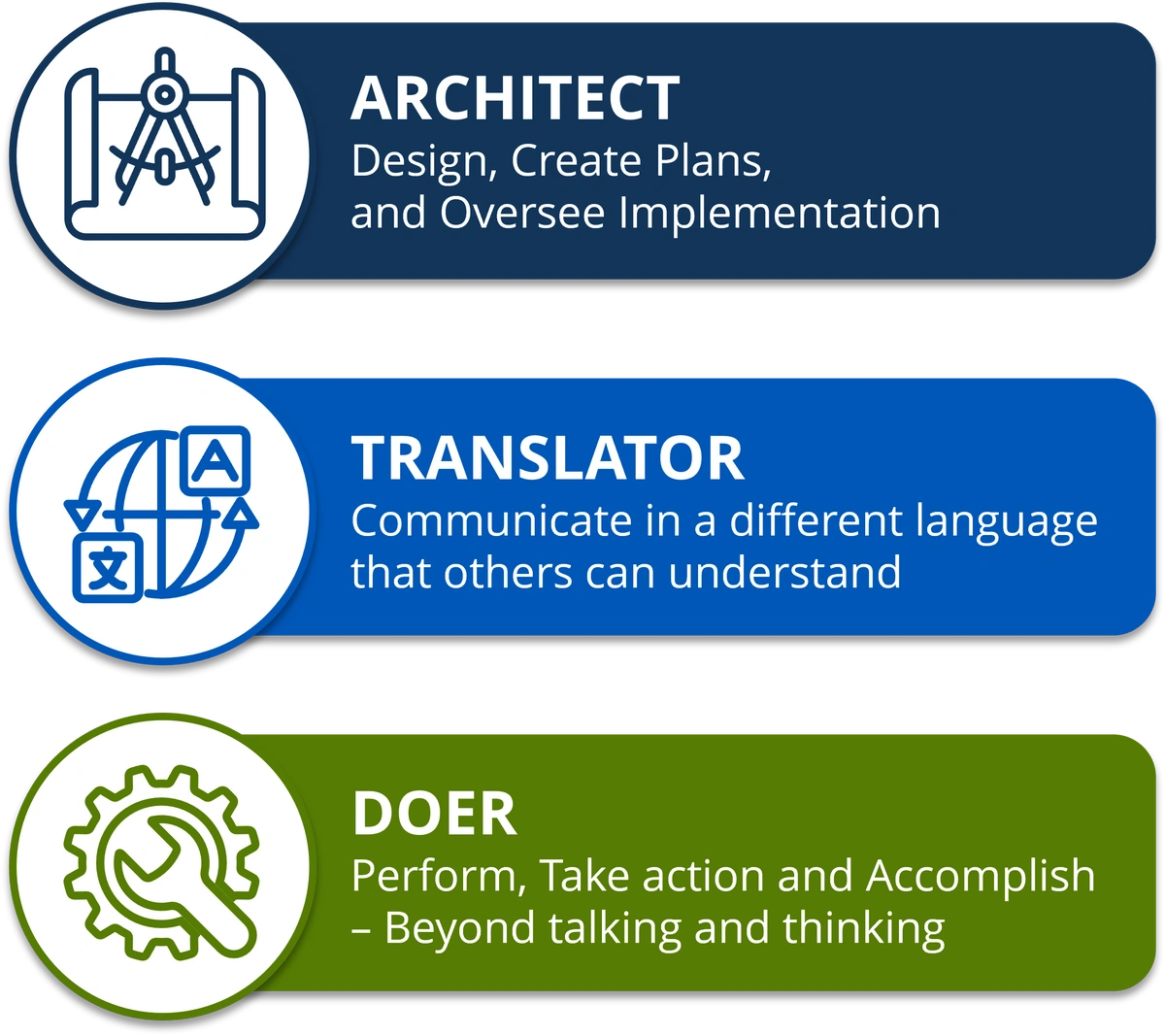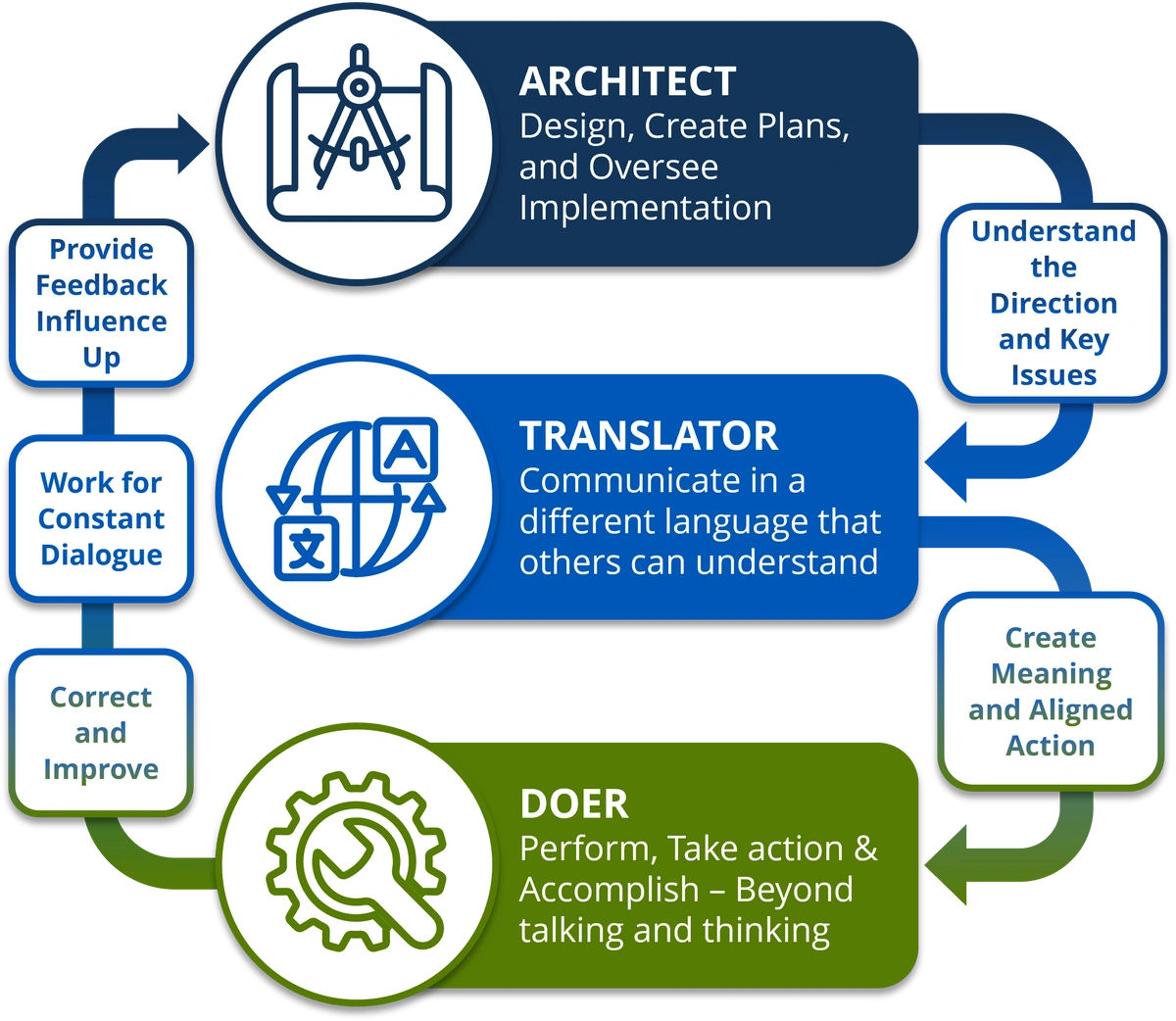A Leadership Tool to Close the Strategy-Execution Gap in the VUCA Environment
Learning Tree International recently partnered with Duke Corporate Education to develop the Advanced Technology Leadership Certificate Program (ATLP) to address organizations' needs in developing ready-now technology leaders. A key aspect of developing the ATLP was identifying the critical challenges technology leaders face in the volatile, uncertain, complex, and ambiguous (VUCA) environment they operate.
One of these critical challenges we identified takes the form of the question: How do technology leaders close the strategy-execution gap that is common to many organizations?

Reasons for Strategy Implementation Failure
Strategies are notoriously difficult to implement for most enterprises. A recent Harvard Business Review article, "4 Common Reasons Strategies Fail" by Andrea Belk Olson (June 24, 2022), confirms this:
“Business strategies often fail. This is well-known by now: according to studies, some 60-90% of strategic plans never fully launch. The causes of derailment vary widely, but execution consistently bears the blame.”
Why is strategy so difficult to implement? Duke CE has grappled with this question with many of their clients and has found that the strategy-execution gap exists primarily due to the following factors:
- Poor communications
- Weak organizational commitment
- Insufficient resources
- Unclear prioritization
- Ambiguous roles and responsibilities
- Lack of strategy translation methods, processes, or skills
- Resistance to change
- Frequent strategy changes due to the VUCA environment
The Architect-Translator-Doer Model Explanation
Of all these factors, we have found that one challenge- a lack of strategy translation- is predominantly to blame for poor strategy implementation. To understand this challenge, it’s necessary to view an organization as being made up of three horizontal levels: an “architect” level, a “translator” level, and a “doer” (individual contributor) level. (see diagram below)
The Architect-Translator-Doer Model (ATD)

In this model, the Architect level of an organization is the layer responsible for developing the strategy that the enterprise intends to implement. Our ATL Program course “Translating Strategy into Results” defines strategy as a central, integrated, externally oriented concept of how an enterprise will achieve its objectives. Strategies are usually developed by “the higher-ups” in the organization and then cascaded down into the organization.
According to this model, the Translator level of the organization resides in the vast middle of enterprises, where the middle managers direct and control the activities of individual contributors that implement the tasks needed to achieve the strategy. Translators interpret the strategy into language that the individual contributors (Doers) can understand so that the Doers spend their time on actions that will realize the strategy.
In this model, Doers are the front-line level of the organization, performing, taking action and accomplishing tasks that will realize the organization’s strategy.
Strategy Implementation in the Architect-Translator-Doer Model
The ATD model goes beyond describing organizational levels necessary for productive strategy implementation. The model also describes how these levels should work together to ensure the strategy is appropriately executed. (see diagram below)

The ATD model shows a flow of directing the organization and critical issues down from the Architects to the Translators and a similar downward flow of meaning and aligned action from the Translators to the Doers. As work on the strategy proceeds, a feedback loop is created, starting from the Doer level up through the Translators to the Architects, to ensure that each level knows actual results that may indicate a need for redirection and realignment.
Strategy Execution Challenges in Most Organizations
If the ATD model paints a picture of how strategy SHOULD be implemented in an enterprise, how is strategy actually executed in most organizations? Most organizations are generally adequate at developing strategies, and many organizations have worked hard to improve their program, project, and agile management practices.
However, based on our research and experience, the most glaring challenge we’ve found in organizations that need help with strategy execution is the absence of effective strategy translation. Typically, there is no Translator role, function or practice for translating strategies into the results that organizations desire.
Improving Strategy Translation and Execution in Organizations
What can organizations do to improve their strategy translation so that the people in the organization that are responsible for moving the strategy into productive action- the Doers- can align their work with the strategy? The first step is to become aware of and acknowledge the need for strategy translation.
Organizations need to understand the need for translation to fix strategy-work misalignment and a gap between the strategy and its implementation. Next, an intentional development plan for translators should be developed and enacted.
This development plan needs to include translation methodologies, tools and skill building. As an example, what should an effective translator be capable of practicing? We've learned that a good translator:
- Creates individual and collective meaning to inspire and motivate action.
- Crafts compelling communications in a language that the Doers can understand.
- Knows how to use translation tools effectively.
- Has a growth, adaptive mindset.
- Translates “strategy” chunks into “action” chunks that deliver results.
- Is comfortable operating in the world of Architects and Doers.
Conclusion and Next Steps
For organizations to close the strategy-execution gap, effective strategy translation is not a nice-to-have function; instead, effective strategy translation is imperative. This means an enterprise needs to move from a "Strategy-Execution” approach to a “Strategy-Translation-Execution” mindset.
Interested in learning more about how to close the strategy and execution gap? Check out our Duke CE Advanced Technology Program, a university partner program with award-winning Duke Corporate Education.


